Cooking outdoors can be a great experience, whether you are camping, hiking, or just enjoying a day in the park. But when it comes to choosing how to cook your food, you have two main options: a camp stove or a wood fire. Both have their advantages and disadvantages, but which is better – a wood fire or camping stove?
Cooking on a camp stove is the clear choice since you have more control over heat output and compatibility with different cookware. Plus It’s safer than cooking on a fire. And camp stoves don’t normally fall under fire restrictions.
I have my own bias, which I’ll explain later. But in this article, we will explore the pros and cons of each and help you determine which one is the best choice for you.
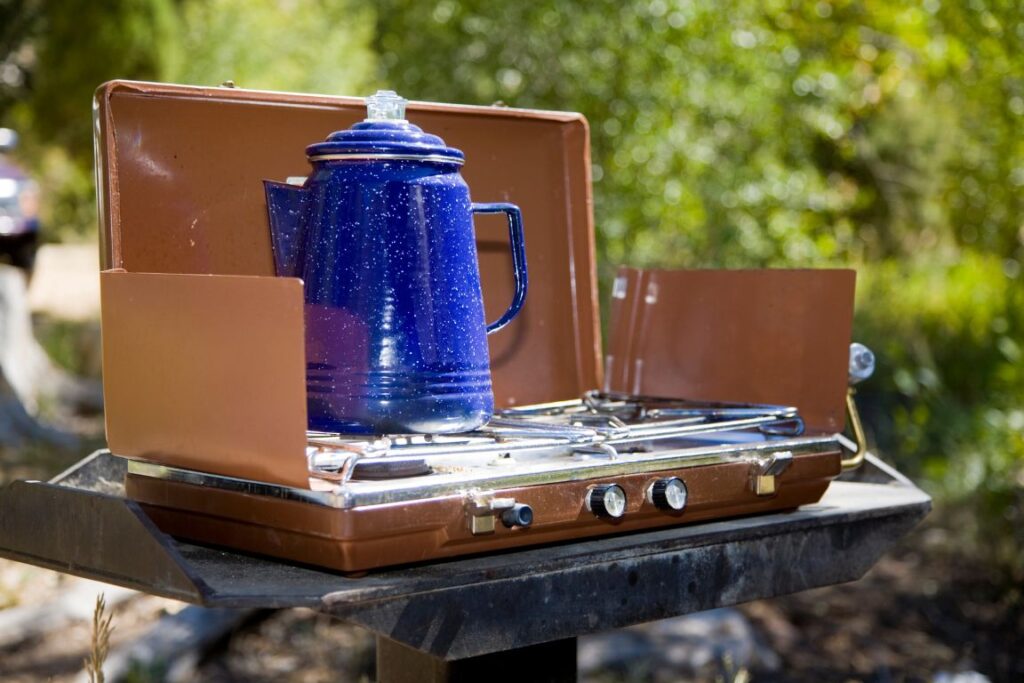
Camp Stove
You can use a camp stove, which is a portable cooking device fueled by propane, butane, or other types of gas. It’s lightweight and easy to transport, which makes it a popular choice.
Here are some of the advantages and disadvantages of using a camp stove:
Advantages
Camp stoves are convenient and easy to use
- Camp stoves are easy to set up and use, requiring minimal preparation time.
- They are portable, making them easy to transport during outdoor activities.
- Camp stoves provide a reliable heat source for food preparation without the need to find firewood.
- Their lightweight design makes them ideal for backpacking, hiking, or camping.
- Even for beginners, setting up and operating a camp stove is effortless, with most models including clear instructions.
- Camp stoves have adjustable flame controls, ignition switches, and temperature gauges, making them user-friendly and convenient.
- They require only a small amount of fuel to generate a substantial amount of heat, making them efficient and perfect for long camping trips.
- Camp stoves generate heat directly under the cooking pot or pan, increasing cooking efficiency and reducing heat loss.
Camp stoves have the ability to control the flame and heat output
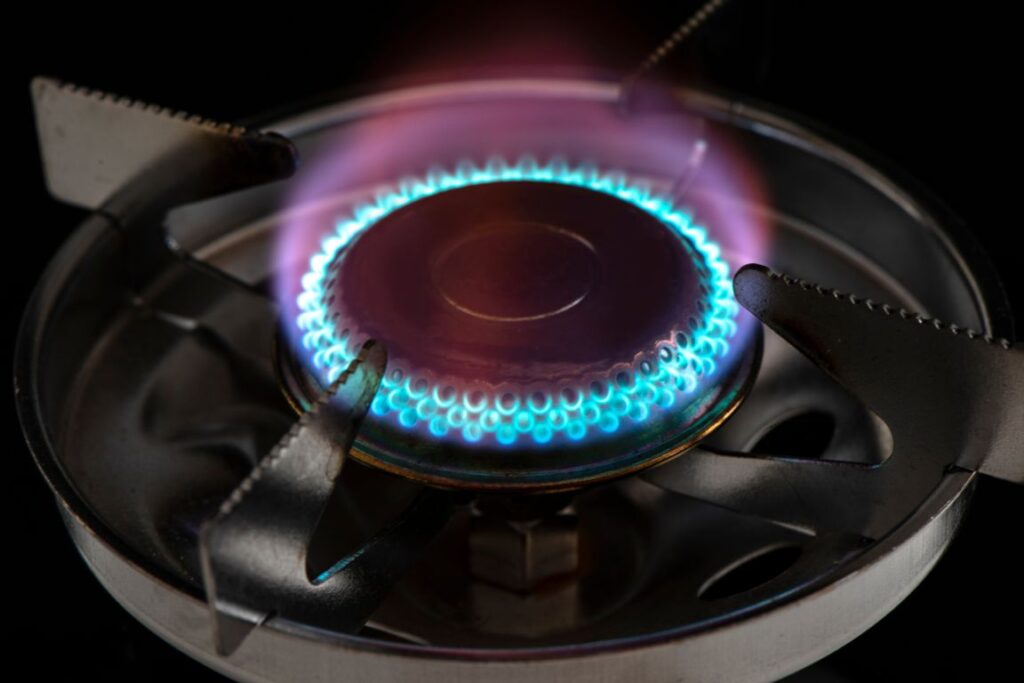
- Camp stoves allow for temperature and flame control, ensuring perfectly cooked food.
- Unlike open fires, camp stoves have knobs or dials to set the temperature, making it easier to regulate.
- This level of control allows for adjusting the heat to achieve the desired cooking temperature.
- Precise temperature control helps cook food evenly and prevents overcooking or burning.
- Using a camp stove saves fuel by preventing wastage through overcooking.
- With a camp stove, cooking is not only convenient but also easier and safer.
Camp stoves are compatible with different types of cookware
- Camp stoves can be used with a variety of cookware such as pots, pans, and griddles.
- The flat and stable cooking surfaces of camp stoves can support different sizes and shapes of cookware.
- This adaptability expands the range of cooking options and simplifies meal preparation for larger groups.
- Many camp stoves come with attachments or accessories like grilling grates or griddles, further enhancing their capabilities.
- This versatility in accommodating different cookware types makes camp stoves a flexible and practical option for outdoor cooking.
We have the Cook Partner camp stove which we love because it’s easy to get it to a simmer. We also bought the Cook Partner griddle for cooking pancakes and bacon.
Camp stoves are efficient
- Camp stoves are highly efficient, using minimal fuel for cooking.
- Fuel efficiency means less weight to carry, making them ideal for outdoor adventures.
- Efficient stoves reduce cooking time, allowing more time for outdoor activities.
- Camp stoves are environmentally friendly, producing less smoke and pollutants.
- Fuel efficiency can save money in the long run, reducing the need for frequent fuel purchases.
- Convenient for quick meals, camp stoves reduce wait time for food.
Camp stoves are safer
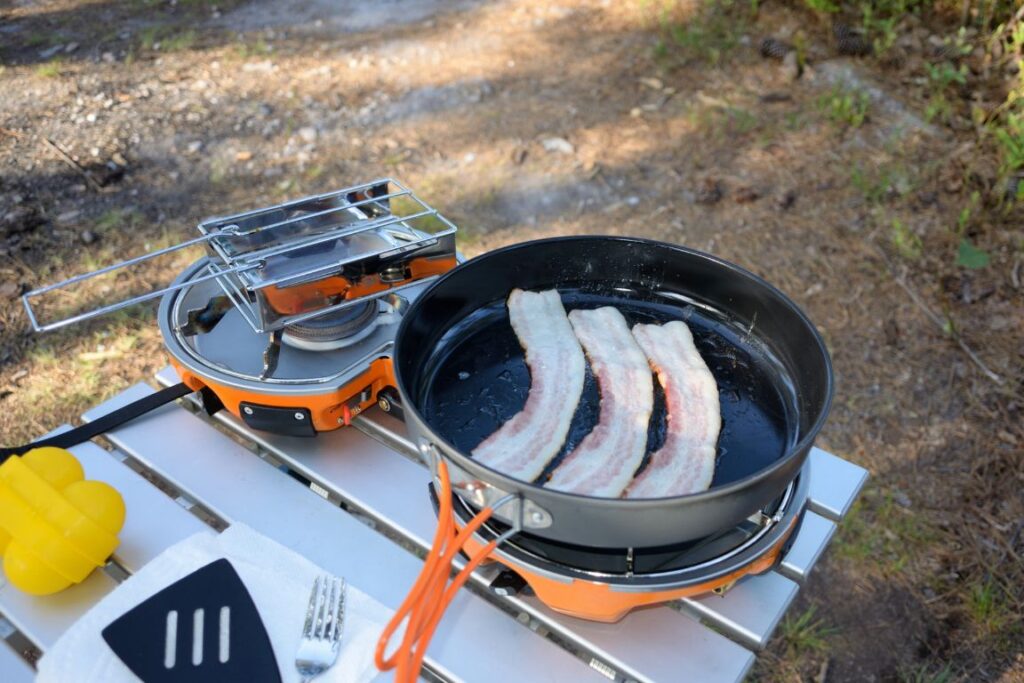
- Camp stoves are safer than wood fires with no sparks or open flames.
- Safety improvements have made camp stoves much safer for outdoor cooking.
- Built-in safety features prevent fires from starting in dry or windy conditions.
- Safe camp stoves reduce the likelihood of burns and injuries while cooking.
- They include features such as automatic shut-off valves and cool handles.
- Safe camp stoves offer a stable cooking surface that minimizes spills and burns.
- They are user-friendly with simple instructions for easy setup and operation.
- Safe camp stoves are dependable and can be trusted to work when needed most.
Camp stoves are clean burning and environmentally friendly
- Camp stoves are eco-friendly and use fuel efficiently, reducing emissions and waste.
- They have a lower carbon footprint compared to traditional wood fires.
- Camp stoves produce less smoke and pollutants, causing less air pollution.
- They are ideal for areas with strict fire regulations where traditional fires may not be permitted.
- Many camp stoves can use eco-friendly fuel options, such as biofuels, solar, or wind power.
- These fuels are sustainable and produce even fewer emissions, making them great for the environment.
Disadvantages
Camp stoves can be more expensive
- Camp stoves can be more expensive than traditional wood fire cooking methods.
- The cost of a camp stove can vary depending on the type, brand, and features.
- High-end camp stoves with advanced features can be particularly pricey.
- However, investing in a camp stove can save money on fuel and reduce the cost of purchasing firewood.
- Camp stoves are a durable and long-lasting investment that can be used for many outdoor activities.
- The initial expense of a camp stove may be offset by the convenience, versatility, and safety features they offer.
- Some lower-priced models of camp stoves are available that can provide a good value for those on a budget.
- It’s important to consider the cost of accessories, fuel, and maintenance when budgeting for a camp stove.
Camp stoves are dependent on fuel
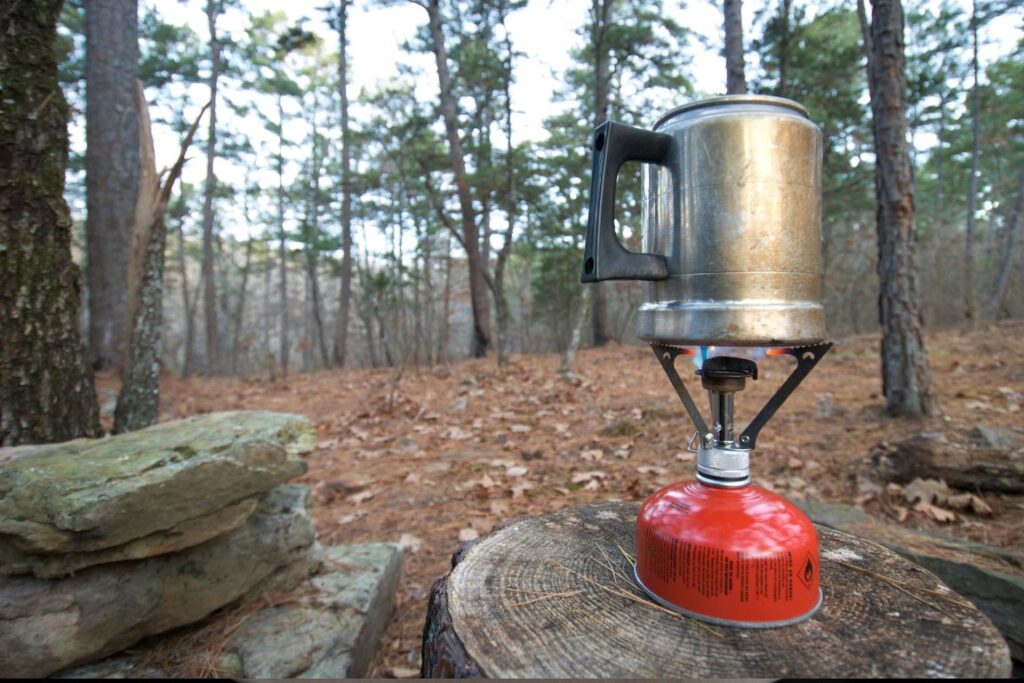
- Camp stoves require fuel to operate, which can be an added expense.
- Depending on the model and fuel type, camp stoves can be less efficient and require more frequent fuel refills.
- Fuel availability can be an issue in remote areas, requiring campers to carry additional fuel or plan their trips accordingly.
- The type of fuel used can impact the cost, convenience, and environmental impact of using a camp stove.
- Some fuel types, such as propane or butane, can be more expensive than others, such as wood or charcoal.
- Fuel spills or leaks can also be a safety hazard, and campers should be careful when handling and storing fuel.
Camp stoves have an environmental Impact
- Camp stoves can have a lower environmental impact compared to traditional wood fires.
- They are designed to use fuel efficiently, which reduces fuel consumption and emissions.
- Camp stoves produce fewer pollutants and less smoke, leading to less air pollution.
- Some camp stoves can use eco-friendly fuel options, such as biofuels, to further reduce their environmental impact.
- However, the use of fuel still contributes to carbon emissions and environmental impact.
- Proper disposal of fuel containers is essential to avoid pollution and harm to the environment.
- Depending on the fuel source, transportation and distribution of fuel can also have an environmental impact.
Wood Fire
A wood fire is a traditional way of cooking outdoors that has been used for centuries. It involves building a fire and cooking over the flames. Here are some of the advantages and disadvantages of using a wood fire:
Advantages
Wood fires can be free
- Wood fires can be a cost-effective option for outdoor cooking.
- Wood is a readily available natural resource that can often be found in camping areas or collected from the surrounding environment for free.
- Collecting wood can be a fun activity for campers and can add to the overall outdoor experience.
- Wood fires also provide warmth, which can be beneficial on chilly nights.
- However, it’s important to check with local regulations and guidelines to ensure that collecting wood is allowed in the area and that fires are permitted.
Wood fires impart great flavor
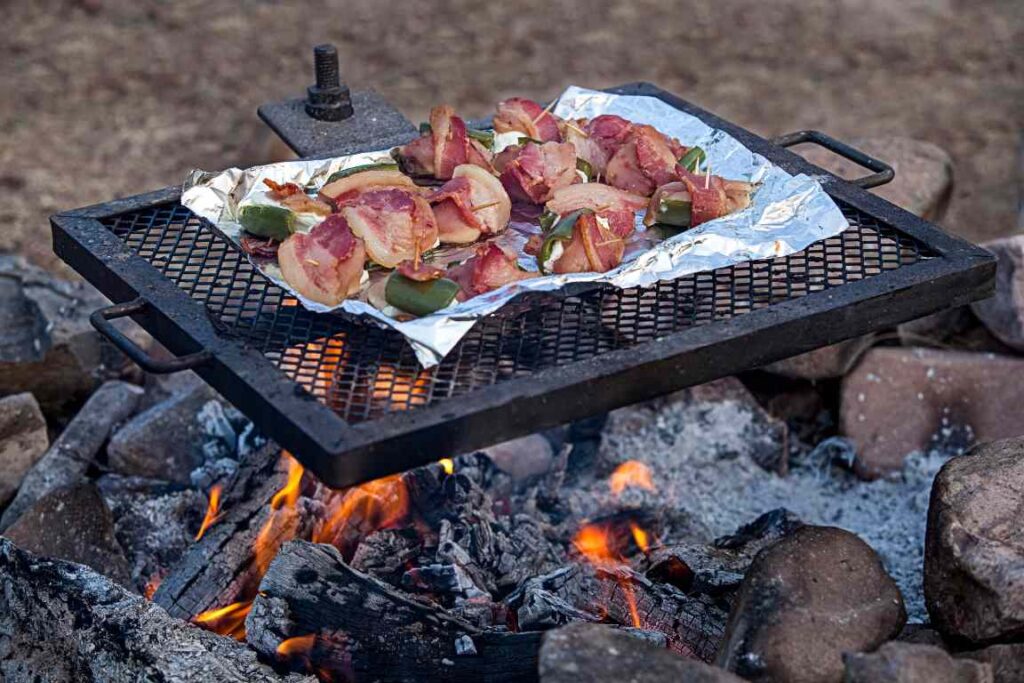
- Wood fires can provide a distinct smoky flavor to your food that cannot be replicated by other cooking methods.
- The natural aroma and taste of burning wood can enhance the taste of your food.
- Cooking with wood fires can add depth and complexity to your dishes.
- Different types of wood can impart unique flavors, allowing for a variety of taste combinations.
- The flavor from wood fires can complement a wide range of dishes, from grilled meats to roasted vegetables to baked goods.
- Wood fires can add a unique and delicious flavor to food that is difficult to replicate with other cooking methods.
- The smoke from the wood infuses the food with a natural, smoky flavor that many people enjoy.
- Cooking over an open flame can also create a charred, crispy exterior on meats and vegetables, adding texture and depth of flavor.
- Wood fires can be used to cook a variety of foods, including meats, fish, vegetables, and even baked goods like bread and pizza.
- For many people, the flavor of food cooked over a wood fire is an important part of the camping experience.
Wood fires give a good camping experience
- Wood fires create a cozy and rustic atmosphere, perfect for camping.
- The sound of crackling wood and the smell of smoke can add to the camping experience.
- Sitting around a wood fire provides an opportunity for socializing and bonding with friends and family.
- Cooking over a wood fire can be a fun and unique experience, with the added benefit of imparting a smoky flavor to the food.
- Watching the flames dance and flicker can be relaxing and enjoyable, especially after a day of outdoor activities.
- Wood fires provide natural warmth, which can be especially appreciated on cool evenings.
Wood fires have a better environmental Impact
- Wood fires are a renewable energy source, which means they have a lower impact on the environment compared to non-renewable energy sources like propane or butane.
- Wood fires produce fewer emissions and pollutants than traditional charcoal or gas grills, making them a better choice for the environment.
- Wood fires are carbon-neutral since they release the same amount of carbon dioxide that the trees absorbed during their growth, whereas non-renewable energy sources release additional carbon dioxide into the atmosphere.
- Wood fires can be created using deadfall or fallen branches, reducing the need for additional resources.
- Wood fires do not require the production, transportation, or disposal of any fuel canisters, reducing their carbon footprint even further.
- Wood fires offer a natural experience that connects campers to the environment and reinforces a sense of appreciation for nature.
Disadvantages
Wood fires take a long time to build
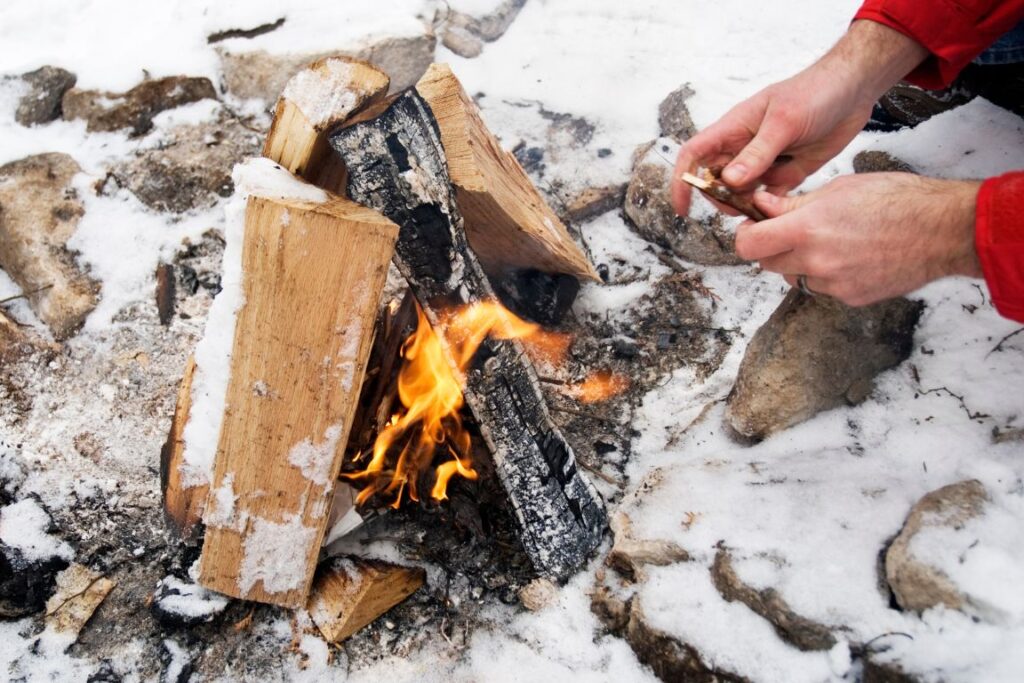
- Building a wood fire requires collecting and arranging firewood, which can take time.
- Finding dry firewood in wet conditions can be challenging and time-consuming.
- Building a fire requires patience and attention to detail to ensure it starts and burns properly.
- Wood fires may require frequent tending to keep them burning evenly and at the desired temperature.
- The process of building a wood fire can be enjoyable and relaxing for those who enjoy the outdoors and the camping experience.
Wood fires don’t have much heat control
- Wood fires are difficult to regulate and often produce inconsistent heat.
- It can be challenging to maintain a consistent temperature for cooking, especially when trying to simmer or boil water.
- Adjusting the heat on a wood fire requires adjusting the amount of wood and airflow, which can be time-consuming and may require constant attention.
- Cooking on a wood fire can be a hit or miss experience, with food sometimes being overcooked or undercooked due to lack of temperature control.
Wood fires are not as safe
- Wood fires are more prone to causing accidents and injuries compared to camp stoves.
- Open flames and sparks from wood fires can easily ignite nearby objects and start wildfires.
- It can be difficult to regulate the temperature of a wood fire, which can lead to overcooking or undercooking food.
- Wood fires can produce a lot of smoke, which can be irritating to the eyes and lungs, and can also cause air pollution.
- Children and pets can accidentally get too close to a wood fire and get burned, and there’s also the risk of embers flying out and causing burns.
Wood fires can have an impact on the environment
- Wood fires can contribute to air pollution, especially in areas with poor air quality.
- The smoke produced by wood fires can contain harmful pollutants and chemicals that can be harmful to human health.
- Burning wood can release carbon dioxide, a greenhouse gas that contributes to climate change.
- Cutting down trees for firewood can also have a negative impact on forests and wildlife habitats.
- In some areas, regulations may limit or prohibit the use of wood fires due to their environmental impact.
A word about campfire bans
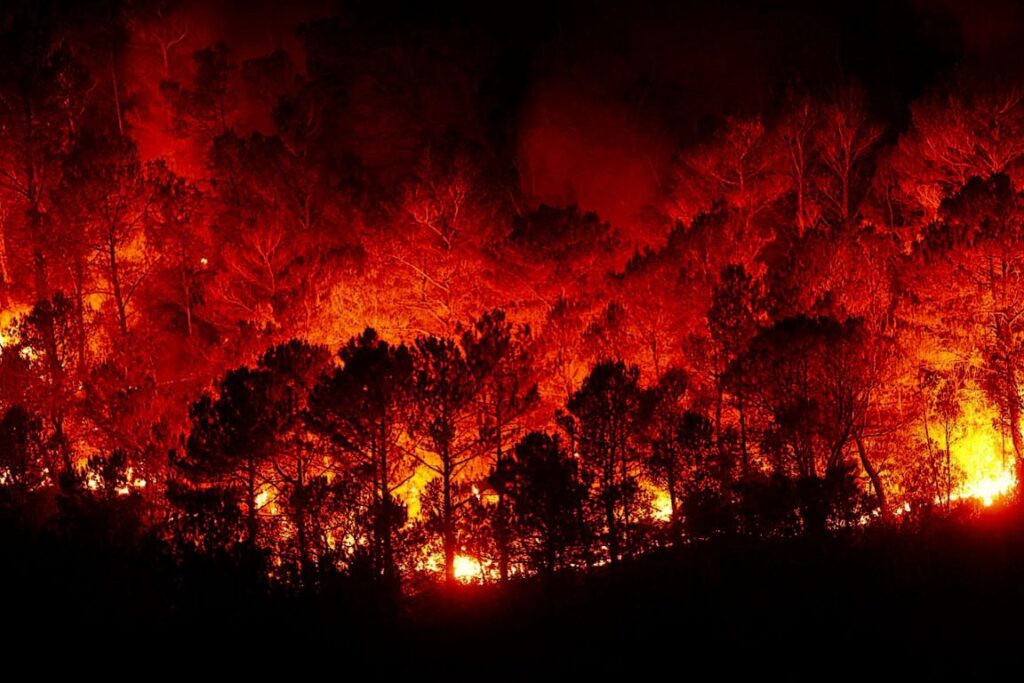
If you live in the West, as we do, you’ll likely run into campfire bans during the summer months. It is hugely important that you honor the bans.
Forest fires are no joke. In 2021, we had to evacuate our house for three weeks during the Caldor fire. We were fortunate that we didn’t lose our home, but many people did.
In my mind, this is one of the most compelling reasons for you to use a camp stove to cook instead of a fire.
Camping Meals
If you want to eat on the cheap while camping, here are some ideas for meals on the cheap that we wrote about.
Conclusion
The debate between camp stoves and wood fires ultimately depends on personal preferences and circumstances. While wood fires have a unique flavor and can be a more affordable option, they also come with safety concerns and environmental impacts. On the other hand, camp stoves offer convenience, fuel efficiency, and a safer cooking experience, but may be more expensive upfront. Ultimately, choosing between a camp stove or a wood fire requires weighing the benefits and drawbacks and making a decision based on individual needs and priorities.
